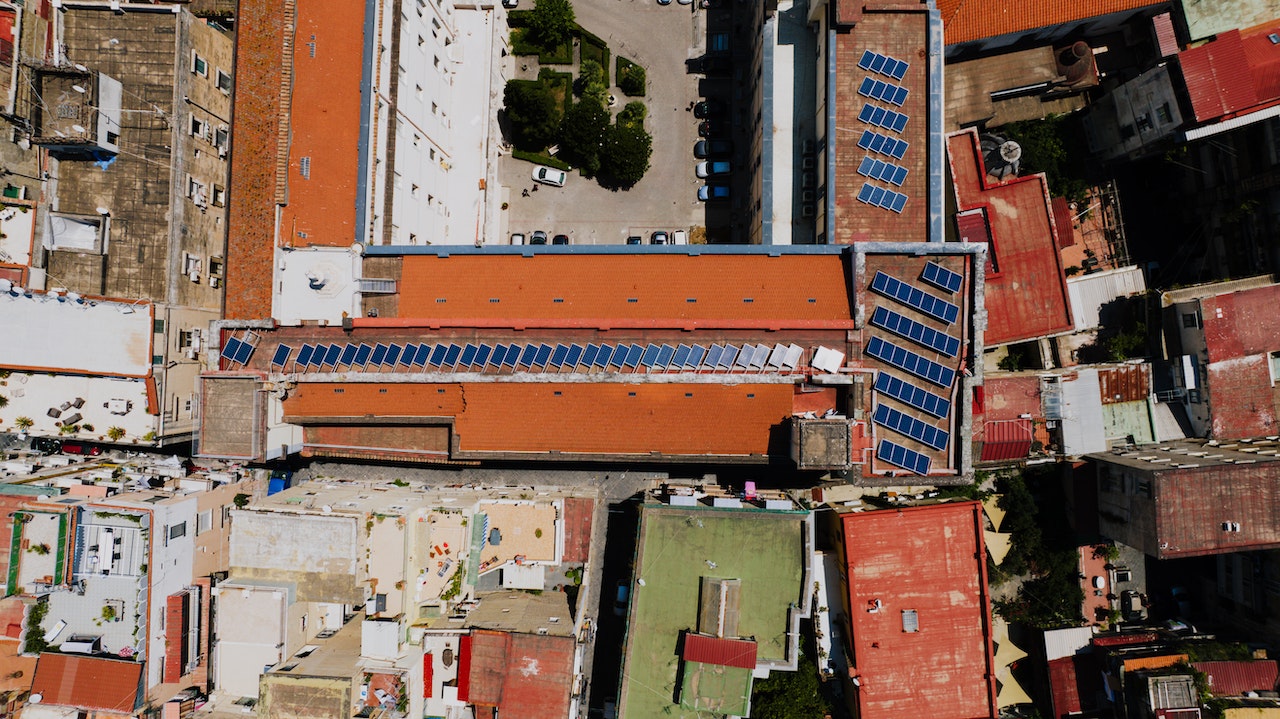Collective self-consumption (autoconsumo colectivo) allows several consumers, such as neighbours of a community or companies in an industrial park, to benefit from a single solar energy system installation. It is sufficient for one-third of the neighbours to vote in favour of the project to be carried out according to article 17 of Law 49/1960. In the following, we will explain how the collective self-consumption works with a simple example.

A solar installation will be installed on the roof or any free space of the community/industrial park. The energy produced by the collective self-consumption installation is distributed among the neighbours who have invested in the installation (at least one-third of the community members).
The basic operation consists of establishing a distribution/investment coefficient agreement for each consumer (the total sum of these coefficients must be equal to 100%). A meter will be installed in the photovoltaic plant to measure the energy generated and the total amount produced is distributed among the participants with their respective coefficients. This distribution is analyzed hourly, i.e., the distribution is analyzed every hour of every day of the month and will be subtracted from each consumer´s electricity bill (in kWh) according to the investment coefficients. In the following example, we show how with an example, how this system works.
How does it work: an example
Costa del Sol A community has six houses and three of them have voted for the community solar (more than one-third of the total members). Therese three residents of the Costa del Sol A community will invest in the installation of a collective self-consumption installation connected to the community grid. The plant has a nominal power of 12 kW, which generates 10 kWh of energy between 12:00 and 13:00 on a sunny day in August. The installation’s meter measures the energy produced and passes to the General Supply Line (LGA), which belongs to the community. Let’s assume that the residents have decided to set the distribution (investment) coefficients as follows:
Juan = 0.3
John = 0.25
Eli = 0.35
Community area = 0.1
Therefore, from the total 10kWh solar energy produced between 12:00 and 13:00, the following will be reduced from the electricity bill of each neighbour:
Juan = 0.3 x 10kWh = 3kWh
John = 0.25 x 10kWh = 2.5kWh
Eli = 0.35 x 10kWh = 2.5kWh
Community area = 0.1 x 10kWh = 1kWh
Also, assume that the consumption of each consumer between 12:00 and 13:00 is as follows:
Juan = 4kWh
John =3kWh
Eli = 2.5kWh
Community area = 5kWh
The amount of consumed electricity on their bill for this specific time period at the end of the month bill will be
Billing(kWh)= Consumption (kWh)- coefficient x total solar energy produced (kWh)
Juan = 4kWh- 0.3 x 10kWh = 1kWh
John = 3kWh- 0.25 x 10kWh =0.5kWh
Eli = 2.5kWh- 0.35x10kWh = -1kWh (as the value is negative, it means that there is surplus energy from the self-consumption installation. This energy will be economically compensated at the price agreed between Eli and his electricity supplier.)
Community area = 5kWh- 0.1x10kWh = 4kWh
These values will be collected by the distribution company (e.g., Endesa in Andalusia as the owner of the meters) and will be sent to each consumer´s electricity provider for billing.
Everything will be done automatically and the consumers should not worry about the billing procedure.
RAD ENERGY is specialized in collective self-consumption in Andalucia. If you are interested in our services, do not hesitate to contact us for more information!



